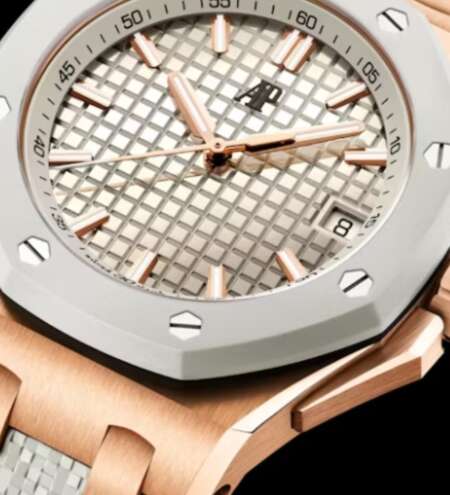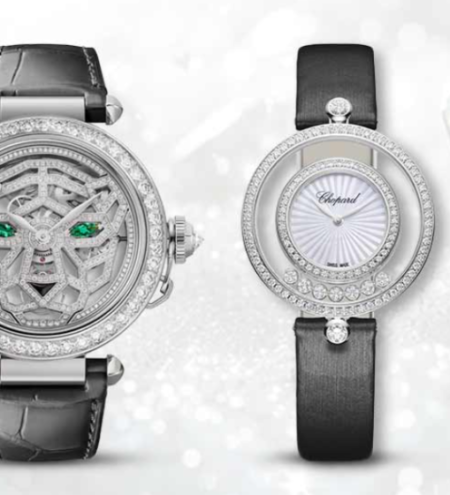It is crucial to discern between what is “waterproof” and what is “water-resistant”. This is important for anyone planning to purchase a high-end watch or even a daily wear one. Several factors must be weighed in while selecting a watch for outdoor activities and sports. The two terms, although used interchangeably often, are quite distinct and serve different purposes in the watch industry. In this blog, we will attempt to break down the differences that exist between the two and also try to answer some common questions about waterproof and water-resistant watches, in detail. This will help you choose the watch that suits your lifestyle best.
What Does Waterproof Mean?
The term waterproof would seem to suggest that the watch can be completely submerged in water without any risk of damage. Watches do not possess an unbreakable barrier against water. No watches exist, completely immune to water over extended periods or under extreme conditions. If a watch is labeled as waterproof, it means that the watch can withstand some exposure to water and that this is the highest level of water protection that is available. For example, a waterproof watch for swimming can withstand intense water exposure, but a water-resistant watch cannot. Waterproof watches are designed for immersion over long periods as is the case with professional divers or arts enthusiasts. dventure prolonged immersion, which makes them suitable for activities such as diving or snorkeling. The watches have seals and gaskets, to prevent water from entering the case. The internal components thus remain dry, even in deep waters.
Also Read: LeCoultre’s Men Rectangular Watches
Can You Swim With a Water-Resistant Watch?
The term water-resistant means that the watch can handle light water exposure, not too much. Water-resistant watches thus provide a lower level of water protection. It means the 3atches can withstand slight exposure to rain or hand washing but are not designed to bear prolonged submersion, without some degree of damage. Many people ask, “Can you swim with a water-resistant watch?” The answer depends on the level of water resistance. Watches labeled as water-resistant up to 30 meters (or 3 ATMs) should not be worn while swimming, at all. They are designed to only handle small splashes or brief contact with water. On the contrary, a 600m water-resistant watch is far more suitable for underwater activities. It can bear significant water pressure. In such cases, the watch is specially engineered to handle submersion at great depths.

Also Read: Buy Bvlgari Serpenti Watch Online in India
Water-Resistant vs Waterproof: The Key Differences
To better understand the difference, it’s important to note the water-resistant vs waterproof jacket analogy. If you buy a jacket marketed as waterproof, it will keep you completely dry. Even in a hard downpour, you stay protected. But if you buy a water-resistant jacket, you will be protected only in light rain. Similarly, a water-resistant watch offers limited protection from moisture, while a waterproof watch is built to handle much more intense exposure to water.

Water-Resistant Watch Ratings Explained
To clarify further, let’s look at common water-resistance ratings:
● 30m or 3 ATM:
Features: Splash-proof. Not designed for swimming or submersion.
● 50m or 5 ATM: Features:
Suitable for light swimming or brief immersion.
● 100m or 10 ATM:
Features: Suitable for swimming and snorkeling. It’s not meant for diving.
● 200m or 20 ATM:
Features: Suitable for recreational diving, but not professional deep-sea diving.
● 300m or above:
Features: Can handle extreme water pressure, as it is designed for divers.
Each level of resistance corresponds to specific activities. For instance, if you’re looking for a waterproof watch for swimming, you could aim for a 100m or 200m water-resistant rating, depending on your needs.
Also Read: Buy Heritage Automatic Watch for Men and Women in India at a Reasonable Price
How to Choose the Right Water-Resistant or Waterproof Watch
When choosing between water-resistant and waterproof watches, consider the following factors:
Lifestyle:
Are you someone who spends a lot of time in water? Or do you only need protection for occasional exposure? If you’re an avid swimmer or diver, a waterproof watch for men would be perfect for you. It comes with a high ATM rating and thus provides the best protection underwater. For everyday use with occasional light water contact, a water-resistant watch may suffice.
Activity:
Think about what activities you’ll be engaging in. Are you planning to go for diving adventures? Or a vacation full of water activities? In this case, one should choose a watch that’s designed for deeper submersion. For more casual activities like swimming, a water-resistant watch with a 50m or 100m rating should work.
Maintenance:
Waterproof watches require more care and maintenance. This is in sharp contrast to water-resistant ones. Seals and gaskets need to be checked regularly, especially after exposure to saltwater or extreme conditions, to ensure they remain effective.
Water Resistance in Everyday Life
A common notion is that all water-resistant watches are suitable for swimming. But this is not true at all. This is, rather, a misconception that prevails across all watch aficionados. As discussed earlier, this is not always true. While a water-resistant watch can handle brief splashes of rain, swimming or showering with it could lead to water damage, especially if the water-resistance rating is below 50 meters. For swimming, a 100m or higher rating is recommended, and for diving, a 200m or more rating is ideal. Additionally, it’s important to understand that water resistance can diminish over time. Gaskets wear out, and seals may degrade, reducing a watch’s ability to resist water. Regular servicing is essential to maintain a watch’s water resistance over the years.
The Role of Depth Ratings
One of the most confusing aspects of water resistance is the depth rating. A watch may be labeled as “water-resistant to 100 meters,” but that doesn’t mean you can dive 100 meters underwater without issues. These ratings are based on lab tests that measure static pressure, not real-world conditions. Activities such as diving, swimming, or even taking a hot shower introduce dynamic pressures, which can exceed the watch’s rated depth even if you’re not that deep underwater. For instance, a 600m water-resistant watch is built to withstand the pressure experienced at such depths, but this level of resistance is more for professional divers than for casual swimmers.
Waterproof Watches for Extreme Activities
For those who engage in extreme activities, such as deep-sea diving or other high-pressure environments, a watch with a 600m water-resistant rating or higher is essential. These watches are built with specialized features, including helium escape valves and reinforced cases, to ensure they can handle the pressure without compromising functionality. When searching for a waterproof watch for men, consider these features carefully, especially if your activities involve high water pressure or long-term exposure.
Maintaining Your Water-Resistant or Waterproof Watch
No matter the level of water resistance or waterproofing, proper care and maintenance are essential to keep your watch in optimal condition. Over time, seals and gaskets may wear out, reducing a watch’s ability to resist water. It’s a good idea to have your watch tested and serviced regularly, particularly if you use it for swimming or diving. Rinse the watch with fresh water after exposure to saltwater or chlorinated pools to prevent corrosion.
Conclusion
In summary, understanding the difference between waterproof and water-resistant watches is key to choosing the right one for your needs. While waterproof watches are ideal for swimming and diving, water-resistant watches are suitable for everyday wear with occasional water exposure. Always consider the water resistance rating and the activities you’ll be participating in to ensure your watch performs as expected. Whether you’re shopping for a waterproof watch for swimming or just need a reliable timepiece for daily wear, make sure to choose wisely, based on your lifestyle and activities. Regular maintenance and servicing will also help extend the life of your watch, ensuring it remains a dependable accessory for years to come.


